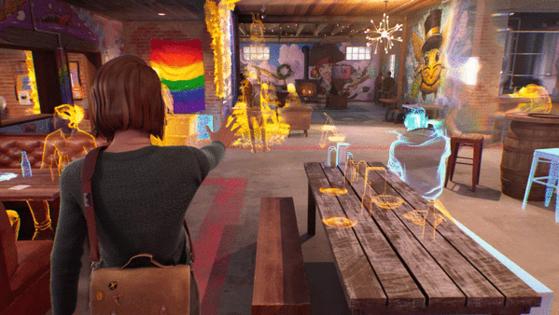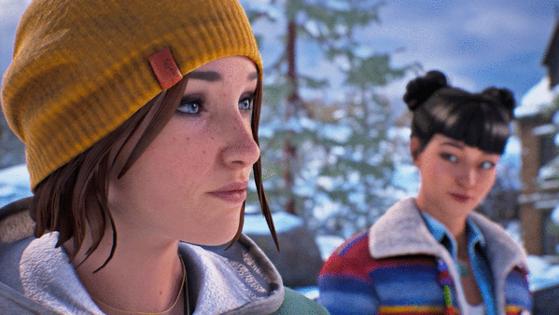'Life Is Strange: Double Exposure' review: Max’s return a welcome reality
Published in Science & Technology News
Regret has a way of making us wish, sometimes, that we could turn back time. The reality of the matter, though, is that we can’t, and we have to live with our choices. At least, that’s our reality. But for Max Caulfield, the time-traveling protagonist of 2015’s "Life Is Strange," the same rules didn’t apply. The regret, though? That still applied to Max, and it formed the core of an amazing story of growing up and dealing with the consequences of our actions (and, yes, time-travel shenanigans).
In the near-decade since that game came out, there have been a handful of spinoff sequels and prequels, but none quite captured the same engrossing, bittersweet magic of the original. This fall’s "Life Is Strange: Double Exposure" does, though. A true sequel to Max’s first adventure, it’s a winning blend of slice-of-life drama and supernatural chaos, anchored by pitch-perfect performances and an engrossing, bonkers story that will stick with you long after the credits roll.
A little background: It’s been 10 years since the events of Arcadia Bay, Oregon, in which 18-year-old Max’s ability to rewind time basically caused reality to shatter and left her with a no-win choice — a decision that would affect her life for years to come. ("Double Exposure" gives you the option to pick the final outcome of the original game, which colors the rest of the story.) In the decade since, she’s stopped using her powers, afraid of unintended consequences and the loss that inevitably follows.
A gifted photographer, Max (voiced again by the wonderful Hannah Telle) is now the artist-in-residence at the illustrious Caledon University in Lakeport, Vermont. Regret still clings to her like a well-worn coat, but she’s slowly finding peace with her new job, friends and possible love interest. But that peace doesn’t last, as tragedy strikes again: Max finds her friend and colleague Safi (Olivia AbiAssi) murdered, which prompts Max to try to solve the mystery of what happened and unlocks a new time-related power.
If that sounds familiar to those who played the first game, that’s because it is. "Double Exposure," developed by Deck Nine and published by Square Enix, lifts more than a few narrative threads from the original, from the murder mystery to the episodic pacing to the setting at a prestigious school with its own elite social club. It’s not a knock — Double Exposure’s story is captivating in its own right, from its scene-setting to its wild conclusion — but it does feel like a bit of a retreat to something more familiar rather than the more ambitious (if less memorable) spinoffs.
In the first game, Max’s main ability was rewinding time. In "Double Exposure," she now can hop between concurrent realities: the current one (the “Dead” timeline) and one in which Safi is still alive (the “Living” timeline). It was a risky choice changing a core feature from the first game, but it pays off handsomely here. Shifting between the timelines adds an ingenious layer of depth to the game, highlighting certain motivations and personality elements depending on whether people are joyously celebrating the Christmas season or grieving the loss of a friend and colleague. Each reality offers perspective you can’t get in the other one, which proves beneficial when you’re trying to solve a murder mystery. Even the music is different: Composer Tessa Rose Jackson’s music beautifully amplifies the disparate moods, and the soundtrack picks are top-notch.
Caledon, which serves as the main explorable area in "Double Exposure," is packed with gorgeous visuals, interesting conversations and hidden collectibles. You could probably finish your first playthrough in about 10 hours if you just stick to the main story, but it’s well worth your time to slow down and explore this lovely world. The dialogue — ranging from discussions about cryptids to being true to yourself — is authentic throughout and by far the strongest element of the sequel.
However, the game’s technical specs don’t hold up to its narrative. That same well-written dialogue often overlaps Max’s internal monologue or other conversations happening in the background, creating a garble of undecipherable voices. (Audio even glitched out a few times.) Textures pop in constantly, breaking the sense of immersion the camera work was valiantly trying to create. Technically, "Double Exposure" is a bit of a mess. Thankfully, though, its primary mechanics — controlling Max, shifting realities — worked without a problem.
In the end, "Life Is Strange: Double Exposure" is a narrative gem, much like its predecessor. Its story, while familiar, is organic and engrossing. Its themes — of loss, love, responsibility and the maturity that comes with age — are universal but come together into something that will stick with you. It could have used a bit more polish technically, but that’s not enough to distract from the excellent sequel as a whole. "Double Exposure’s" endings lay out a path to possible sequels; if this is the path Deck Nine is taking, I’m excited to see what the future holds.
———
Life Is Strange: Double Exposure ★★★ (out of four)
Developed by Deck Nine, published by Square Enix; available on PlayStation 5, Xbox Series X/S, Nintendo Switch and PC; rated M for Mature for mild blood, strong language, suggestive themes, use of drugs and violence; $49.99
———
©2024 The Seattle Times. Visit seattletimes.com. Distributed by Tribune Content Agency, LLC.










Comments